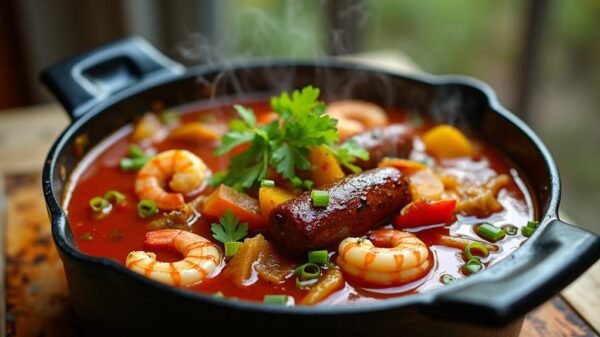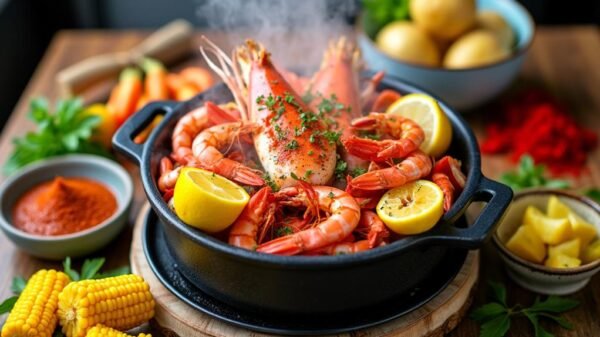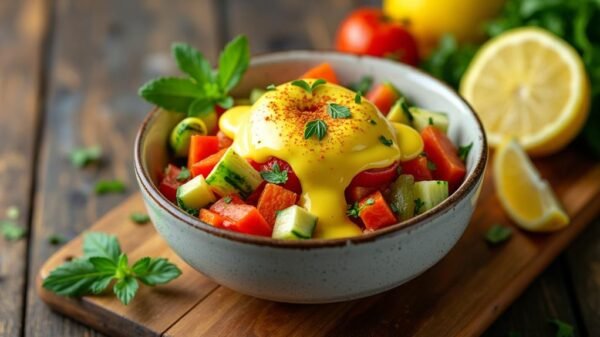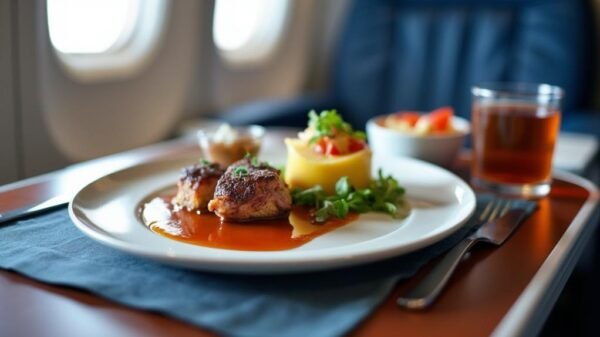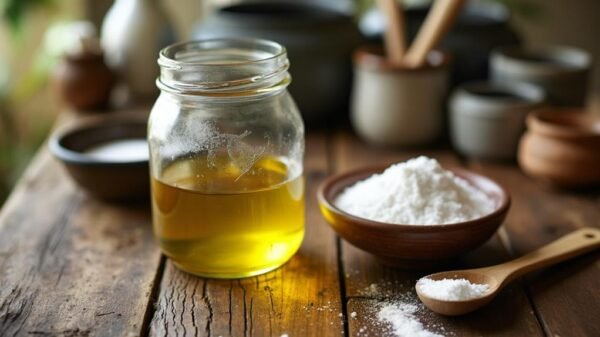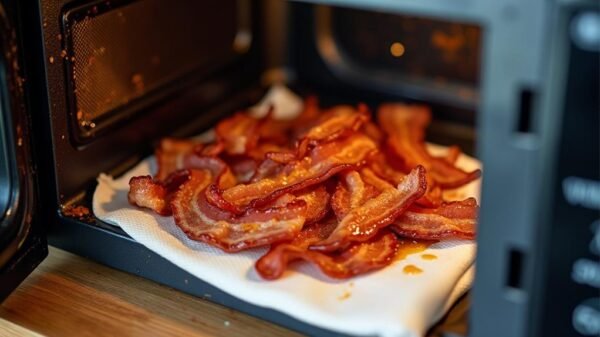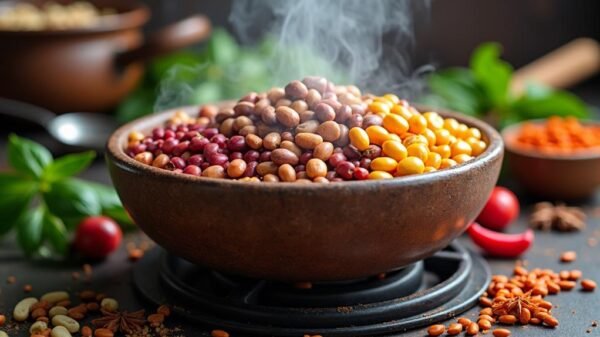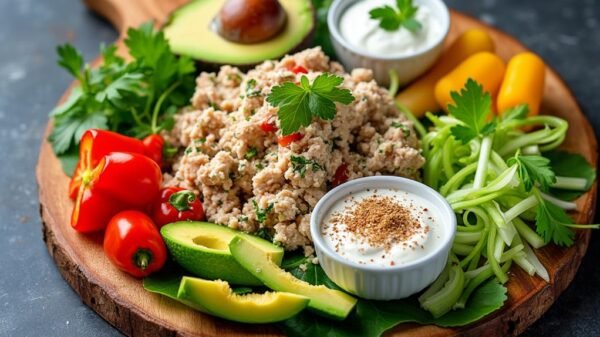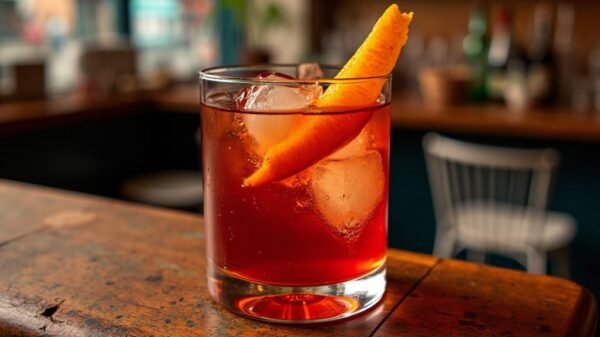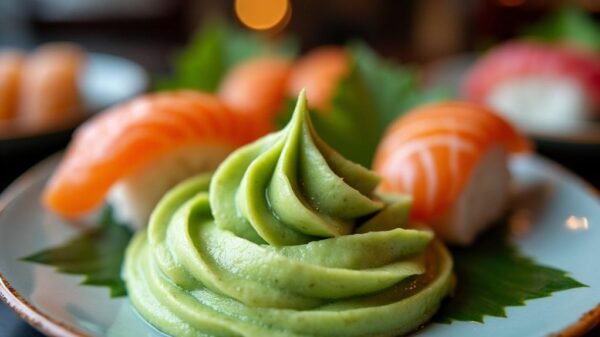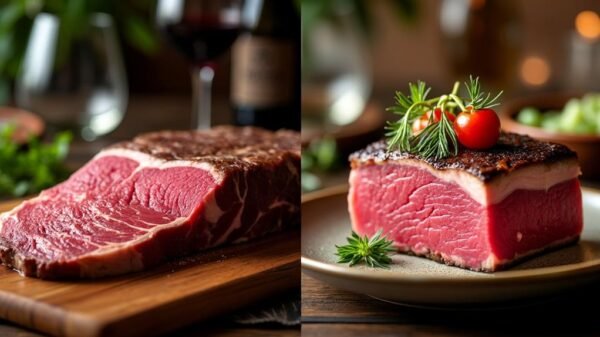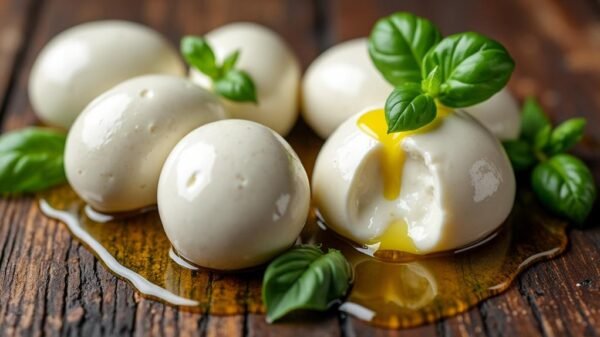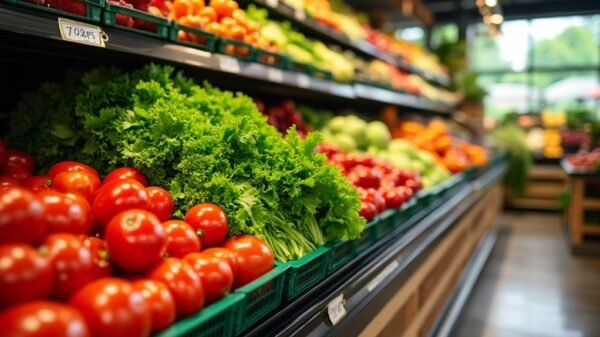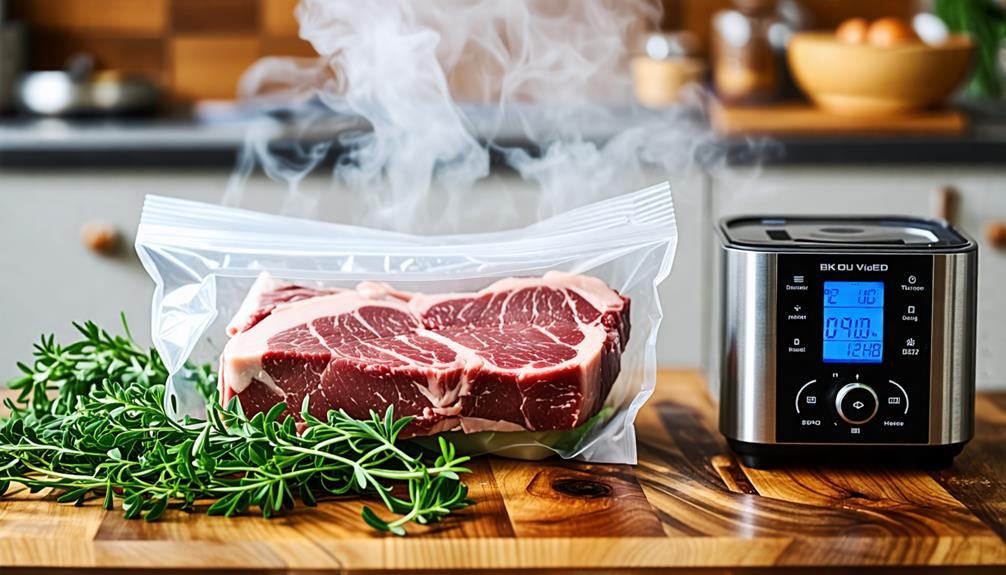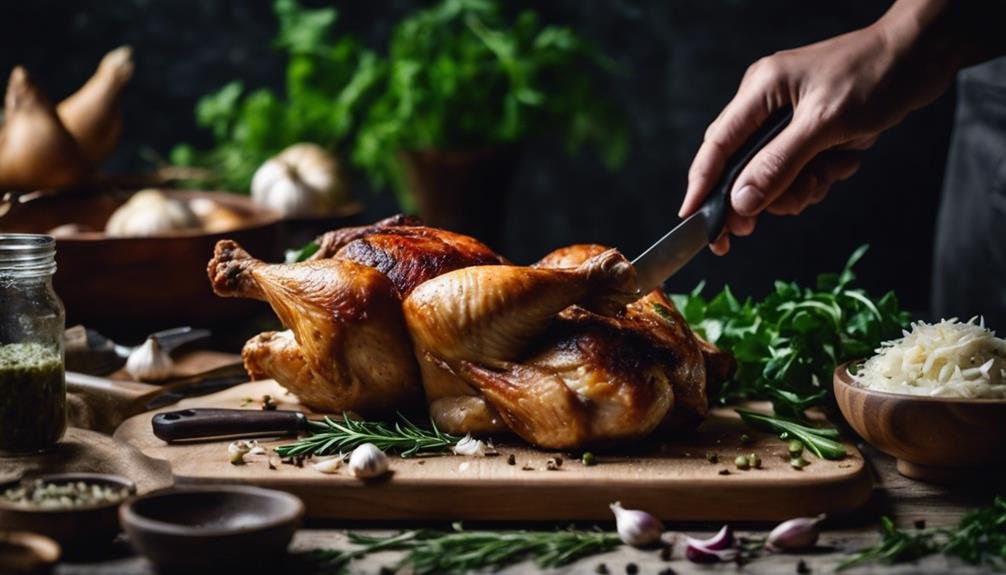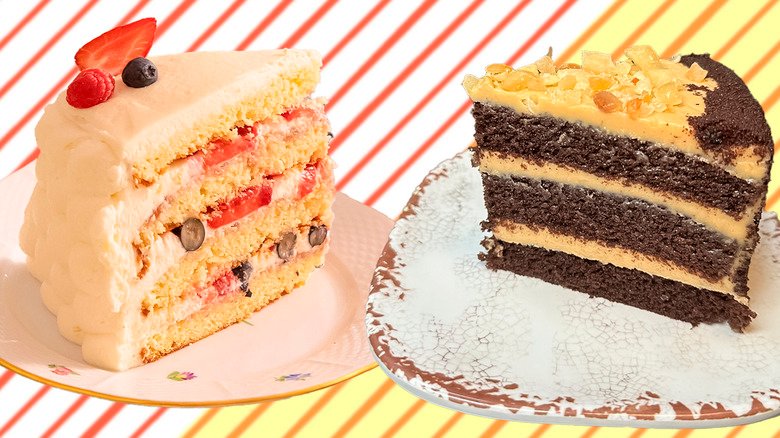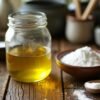Yes, you can sous vide a frozen steak, and it's a straightforward process. Sous vide cooking involves immersing the steak in a temperature-controlled water bath, which ensures precise cooking throughout. For best results, increase the cooking time by 30 to 45 minutes compared to a thawed steak. It's important to maintain consistent water temperature to eliminate food safety concerns. Seasoning can be done by vacuum sealing with mild marinades or herbs, enhancing flavor without compromising texture. Searing after cooking adds a desirable crust. To fully understand the best practices and tips for frozen steaks, further exploration of specific techniques is beneficial.
Benefits of Sous Vide Cooking
Sous vide cooking delivers unmatched precision and consistency, resulting in steak that is juicy and bursting with flavor. This modern culinary method allows for the hassle-free preparation of frozen beef cuts, ensuring safety and satisfaction while significantly reducing the chance of overcooking. By submerging the steak in a temperature-controlled water bath, chefs can reach the perfect internal temperature, guaranteeing an even cook from edge to edge.
Additionally, sous vide cooking alleviates food safety worries related to thawing frozen proteins, as the slow heating process effectively eradicates harmful bacteria. While cooking times may be longer for frozen steaks, the advantages far exceed these minor adjustments. For example, steak thickness and desired doneness determine the water temperature and cooking time, enabling customized results.
The controlled environment of sous vide encourages culinary experimentation, allowing chefs to explore various cooking techniques with confidence. Ultimately, sous vide cooking not only ensures perfectly cooked steak but also inspires individuals to explore diverse flavors and textures, making it an essential technique for both home cooks and professional chefs alike.
Seasoning Frozen Sous Vide Steak
To season frozen sous vide steak effectively, select marinades and ingredients that enhance flavor while maintaining texture. Choose mild marinades, avoiding high acidity to prevent toughening the meat. A blend of dry herbs like thyme, garlic, and rosemary can enhance the steak's inherent flavors without adding excess moisture. Vacuum sealing the steak with these seasonings ensures that flavors meld during the sous vide cooking process.
Limit salt in your marinades to avoid an overly brined steak that could negatively affect texture. Instead, consider using compound butter, such as those from brands like Kerrygold, which can be added post-cooking for richness and depth. This method not only enhances flavor but also facilitates a beautiful sear.
For those interested in diverse steak recipes, experimenting with various herbs and spices can yield delightful outcomes. The sous vide technique guarantees precise cooking, allowing flavors to permeate the steak uniformly. Ultimately, proper seasoning can elevate a frozen sous vide steak into a culinary masterpiece, enabling you to enjoy gourmet flavors in the comfort of your home.
Cooking Temperature and Time
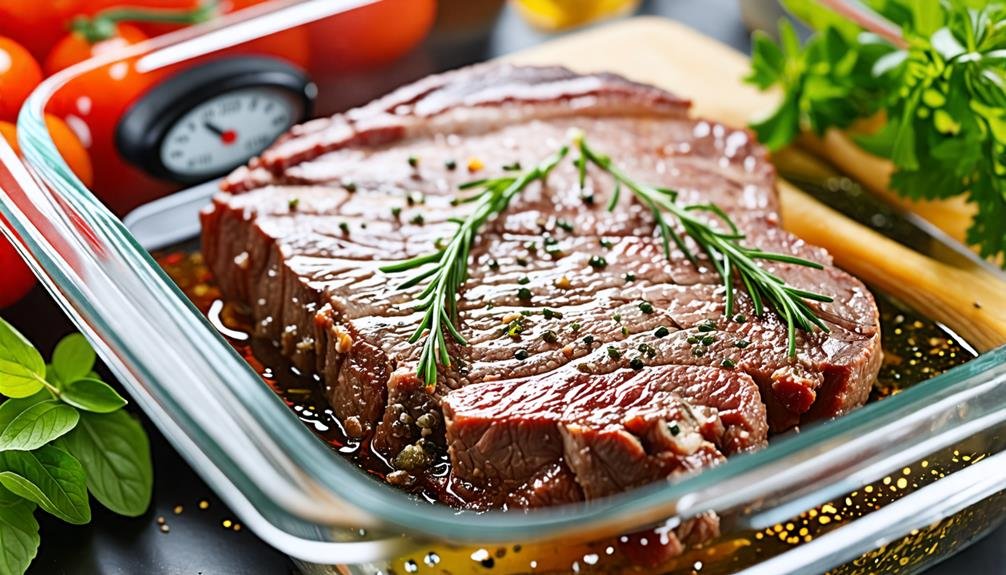
When cooking frozen steak sous vide, maintaining the ideal temperature range is essential for achieving the desired doneness. Typically, a temperature between 135 and 140 degrees Fahrenheit will produce a medium finish; however, adjustments in cooking duration are necessary due to the steak being frozen. It is generally recommended to add an additional 30 to 45 minutes to the cooking time, ensuring that the meat cooks evenly throughout.
Ideal Temperature Range
To achieve the ideal cooking temperature for frozen steak, aim for a range of 135-140 degrees Fahrenheit for a medium finish. This temperature ensures a tender and flavorful outcome. It allows the meat to cook evenly and retain its natural juices, which is crucial for the best taste and texture.
When preparing frozen steak using Sous Vide methods, keep these factors in mind:
- Thickness: Adjust cooking time for thicker cuts to ensure proper doneness.
- Consistency: Sous Vide offers a uniform cooking environment, reducing the chance of overcooking.
- Flavor retention: Controlled cooking temperatures keep the steak juicy and flavorful, even from a frozen state.
Adjusting Cooking Duration
Adjusting the cooking duration for frozen steak is essential for achieving optimal tenderness and flavor. The coldness of the steak necessitates additional time to reach the desired doneness. When using sous vide methods, a medium finish typically requires temperatures between 135 to 140 degrees Fahrenheit. However, for frozen steaks, it's important to increase the cooking time by 30 to 45 minutes, depending on the steak's thickness.
Thicker cuts, such as ribeye or filet mignon, require longer cooking durations to ensure even heat distribution throughout the meat. This extended cooking time compensates for the lack of thawing, allowing the steak to achieve the same doneness as fresh options. The sous vide technique, popularized by brands like Anova and Joule, is particularly effective, providing consistent cooking without the risk of overcooking.
Careful monitoring of cooking duration is vital; exceeding the recommended time can result in an undesirable texture. By understanding the relationship between temperature, thickness, and cooking time, you can achieve customized results that cater to your preferences, enhancing your culinary experience. Following these guidelines will result in perfectly cooked frozen steak that is both flavorful and tender.
Tips for Successful Sous Vide
Achieving success in sous vide cooking, particularly with frozen steak, hinges on precise temperature control and the thoughtful use of seasonings. Maintaining the appropriate water temperature is vital to guarantee even cooking and prevent overcooking, which can compromise the steak's quality. Moreover, experimenting with various seasonings can improve flavor profiles, allowing for a customized dining experience that uplifts the dish beyond its basic preparation.
Precise Temperature Control
Precise temperature control is crucial for sous vide cooking, as it directly impacts the doneness and quality of your steak. The sous vide technique, utilizing immersion circulators like Anova or Joule, ensures consistent water temperature, allowing your steak to cook evenly to your desired doneness. By mastering temperature management, you can elevate your culinary skills.
- Utilize an immersion circulator, such as the Anova Culinary Precision Cooker, to maintain a steady water temperature.
- Always preheat the water bath before introducing your frozen steak.
- Adapt cooking time based on the thickness of the steak and your preferred doneness level.
Experiment With Seasonings
Experimenting with various seasonings can significantly enhance the flavor of your sous vide frozen steak, turning it into a personalized culinary journey. The sous vide technique allows for precise cooking conditions, making it perfect for trying out different flavor combinations. Start by vacuum sealing your steak with a marinade or compound butter that complements the meat's inherent richness. Be mindful of salt; too much can result in unwanted brining.
Instead, opt for dry herbs and spices like thyme, garlic, and rosemary, which enhance flavor without affecting texture. While acidic marinades are common, they can toughen the meat if overused, so it's best to use them sparingly.
After the sous vide process, searing your steak in a hot skillet with extra compound butter creates a delightful crust and elevates the overall taste. This finishing method allows the flavors to combine beautifully, resulting in a dish that is both tender and full-bodied. By taking the time to experiment with different seasonings, you unlock the potential for a unique dining experience tailored to your taste preferences. Embrace the opportunity to create and savor your culinary adventure.
Common Mistakes to Avoid
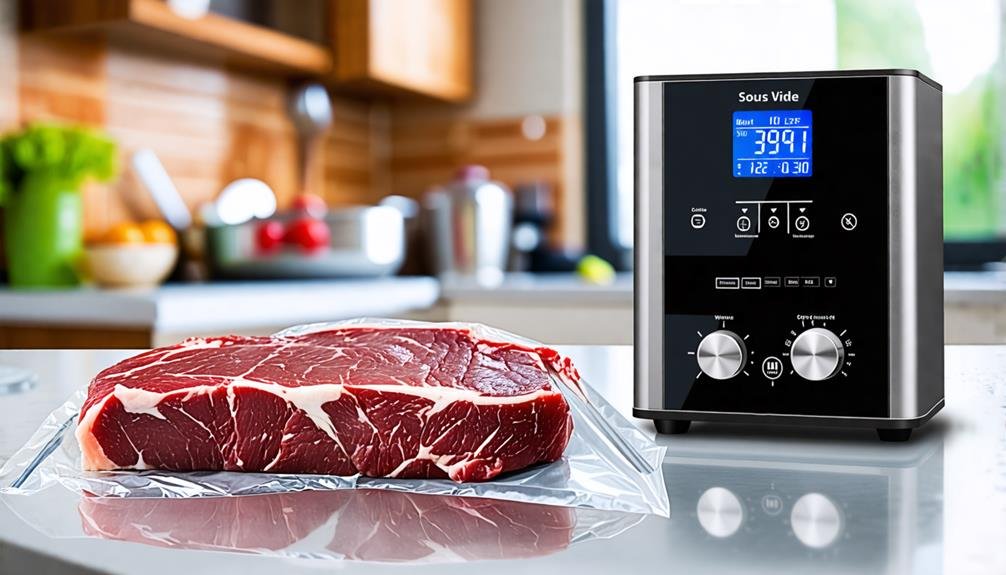
When sous vide cooking frozen steak, avoid using marinades that compromise the meat's texture. Here are essential mistakes to prevent for the best results:
- Over-salting marinades: Excessive sodium can create a brining effect, altering the steak's texture and taste.
- Using acidic ingredients: Components like vinegar or lemon juice can toughen the meat if marinated too long, leading to an unpleasant texture.
- Poor vacuum sealing: Properly sealing the bag is crucial. Air pockets can cause uneven cooking or allow water to enter, disrupting the process.
Food Safety Considerations
When preparing sous vide frozen steak, it is important to adhere to safe cooking temperatures to eliminate potential foodborne pathogens. Proper vacuum sealing is necessary to prevent water from entering the bag, which can compromise both the cooking process and food safety. Moreover, managing cooking times effectively is crucial; extending the duration for frozen steaks guarantees thorough cooking while maintaining desired texture and flavor.
Safe Cooking Temperatures
Safe cooking temperatures are crucial for ensuring the safety and quality of sous vide frozen steak. This cooking technique allows for precise temperature management, which is essential for preventing foodborne illnesses.
To enjoy your steak safely, keep these important points in mind:
- Minimum Internal Temperature: For medium-rare steak, achieve an internal temperature of at least 130°F to effectively eliminate harmful bacteria.
- Cooking Time Adjustments: When preparing frozen steak, extend the cooking duration by 30 to 45 minutes to account for the initial lower temperature.
- Thickness Matters: Thicker cuts of steak may need extra time to ensure that the entire piece reaches the safe cooking temperature.
Vacuum Sealing Importance
Vacuum sealing is crucial in sous vide cooking because it reduces the risk of harmful bacteria and ensures even and safe cooking of meat. High-quality vacuum bags, like those from FoodSaver, are essential. They maintain a controlled environment around the steak, keeping air and bacteria out. This process enhances heat transfer, allowing the steak to reach the desired doneness uniformly.
Using sturdy vacuum bags prevents water from seeping in, which helps retain flavors and preserves texture. Additionally, vacuum sealing enables the marinade to penetrate the meat, boosting flavor while maintaining safety. Given the long cooking times in sous vide, proper sealing is key to preventing spoilage and enhancing the overall cooking experience. Prioritizing vacuum sealing not only safeguards food but also elevates sous vide culinary results.
Time Management Tips
Effective time management is crucial for sous vide cooking, ensuring food safety and optimal steak doneness. When cooking frozen steak sous vide, it is essential to adjust the cooking time appropriately. This adjustment guarantees that the steak reaches a safe internal temperature while preserving its quality. Here are some important considerations:
- Extend Cooking Duration: Increase the cooking time by 30-45 minutes compared to fresh steak.
- Assess Thickness: Thicker cuts of meat require longer cooking times, so modify your approach as needed.
- Control Temperature: Keep a steady water temperature throughout the cooking process to inhibit bacterial growth.
Choosing the Right Cut
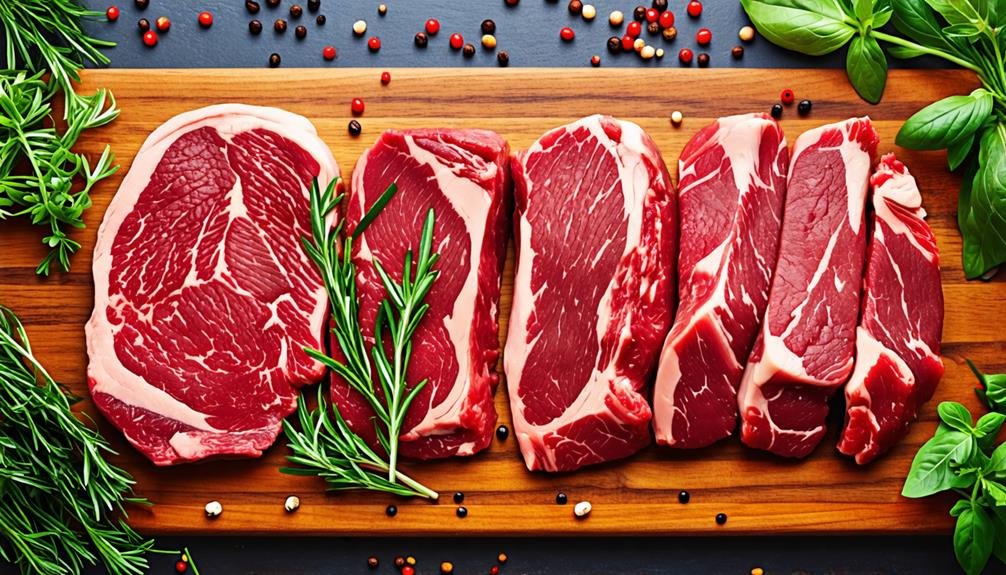
Choosing the right steak cut is essential for flavor and tenderness in sous vide cooking. Cuts like ribeye are prized for their marbling and flavor, making them perfect for this method. The fat in ribeye melts during cooking, enhancing juiciness and taste.
In contrast, leaner cuts such as flank and sirloin need extra care. Flank steak benefits from marinating to improve tenderness, while sirloin provides a good mix of flavor and texture. Opt for steaks that are at least one inch thick for optimal results, as they retain moisture and heat better during sous vide.
Personal taste also matters. Filet mignon appeals to those who enjoy a tender, buttery bite, while New York strip caters to those seeking a bolder flavor. By understanding the unique attributes of each cut, you can make informed choices that elevate your sous vide experience and ensure a delicious meal.
Searing After Sous Vide
Searing after sous vide cooking enhances the steak's flavor and texture, creating a delectable crust that contrasts beautifully with the tender interior. This last step not only elevates the visual presentation of the steak but also introduces a rich, complex flavor profile that can be hard to resist.
To achieve an ideal sear, follow these guidelines:
- High Heat: Utilize a Lodge cast-iron skillet or Weber grill preheated to a high temperature for a quick, flavorful crust.
- Minimal Oil: Apply a thin layer of high smoke-point oil, such as canola or avocado oil, to prevent burning and maintain the steak's flavor.
- Timing: Sear for just 1-2 minutes per side, allowing the crust to form while keeping the interior perfectly cooked.
Flavoring Techniques for Steak

Enhancing steak flavor involves a careful seasoning strategy that significantly elevates the dining experience. For sous vide frozen steak, effective flavoring techniques are essential to complement the meat's natural richness. One effective method is vacuum sealing the steak with a marinade or compound butter prior to cooking. However, be mindful; too much salt can lead to excessive brining, while high-acid marinades can toughen the meat.
Instead, opt for dry ingredients like garlic, thyme, and rosemary, which provide a robust flavor without affecting the steak's texture. After completing the sous vide cooking process, finish the steak with a quick sear in a hot cast iron skillet, ideally using a bit of compound butter to boost flavor. This final searing not only creates a delicious crust but also enriches the overall flavor profile, making every bite memorable.
Exploring various seasonings allows for personalization, accommodating different taste preferences. Mastering these flavoring techniques enables you to create an exceptional steak that fulfills the culinary desires of many home cooks, ensuring a delightful meal every time.
Equipment Needed for Sous Vide
To successfully engage in sous vide cooking, you need specific equipment. The essential items include an immersion circulator, a vacuum sealer, and specialized storage bags. These tools ensure perfect steak preparation, even with frozen cuts.
- Immersion Circulator: This device, like the Anova Precision Cooker, keeps the water temperature steady for precise cooking.
- Vacuum Sealer: A brand like FoodSaver is crucial for eliminating air from bags, preventing spoilage and ensuring uniform heat distribution.
- Storage Bags: High-quality bags, such as those from Ziplock, are designed to endure heat and pressure, maintaining food integrity.
Investing in these tools enhances your cooking experience. With the right equipment, you can cook steak from frozen while enjoying the ease and precision of sous vide. This method encourages culinary experimentation, allowing you to explore new flavors and techniques, ultimately boosting your confidence and creativity in the kitchen.



